If you’re up late doing your U.S. federal income taxes the evening of April 14, you might want to take a couple of breaks and go outside to behold some celestial wonders that Mother Nature will display for us over the nighttime of April 14-15, 2014.
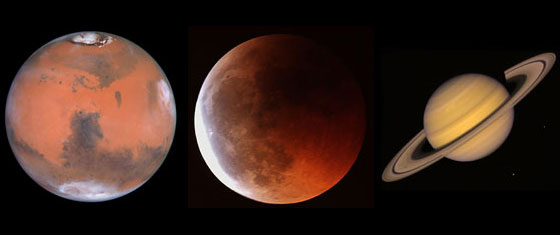
First, the planet Mars will make its closest approach to Earth for 2014 on April 14. It will be the bright, red ‘star’ near the Moon that evening. Second, the Moon itself will undergo a total eclipse — the first total lunar eclipse in over two years. It will darken as it passes through the Earth’s shadow, turning an orange/reddish color, somewhat resembling the color of Mars. You can also get a good view of the beautiful, ringed planet Saturn starting around midnight. This all assumes, of course, that your local weather cooperates.
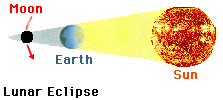
Who Can See the Lunar Eclipse
The following chart shows where the lunar eclipse can be viewed.
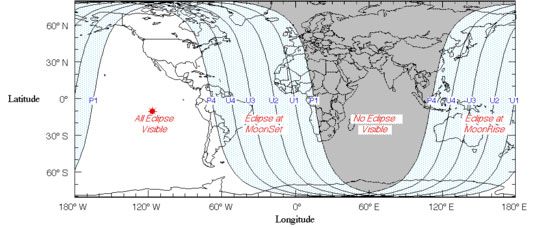
When You Can See the Lunar Eclipse
If you want to see the whole eclipse and you live in the lower 48 states of the U.S., then you’re probably going to want to take April 15 off from work — or at least take the morning off! The eclipse really gets under way for you late at night, and lasts into the wee hours of the morning.
Here’s a table with specific times for various time zones in the U.S., including Alaska (AKDT) and Hawaii (HST):
| EDT | CDT | MDT | PDT | AKDT | HST | |
| Partial Eclipse Begins | 1:58 am | 12:58 am | 11:58 pm | 10:58 pm | 9:58 pm | 7:58 pm |
| Total Eclipse Begins | 3:06 am | 2:06 am | 1:06 am | 12:06 am | 11:06 pm | 9:06 pm |
| Maximum Eclipse | 3:45 am | 2:45 am | 1:45 am | 12:45 am | 11:45 pm | 9:45 pm |
| Total Eclipse Ends | 4:24 am | 3:24 am | 2:24 am | 1:24 am | 12:24 am | 10:24 pm |
| Partial Eclipse Ends | 5:33 am | 4:33 am | 3:33 am | 2:33 am | 1:33 am | 11:33 pm |
If you live in another part of the world, your local news media will undoubtedly inform you as to when to look for the eclipse.
Where to look
Of course, obviously you’ll look for the Moon! But the illustration below shows the positions of Mars and Saturn with respect to the Moon at about 1:00 am your local time. Note that you might see a bright star very near the Moon: That will be the star “Spica” in the Name A Star Live constellation Virgo. The Moon will pass in front of Spica over the night of April 14-15. So, depending on the time you look and your location on Earth, you:
- May not see Spica at all;
- May see Spica as the Moon begins to cover it; or
- May see Spica as it begins to emerge from behind the Moon.
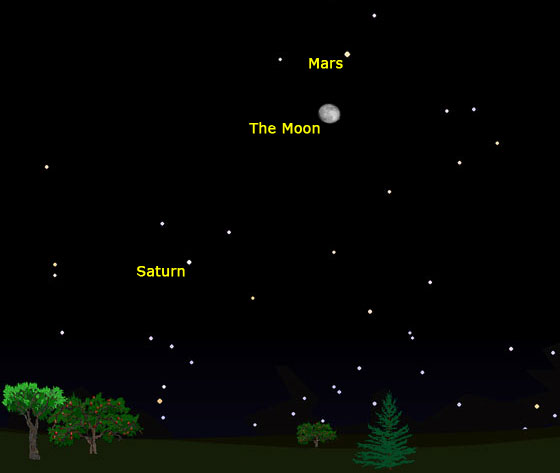
Why the Moon will appear red
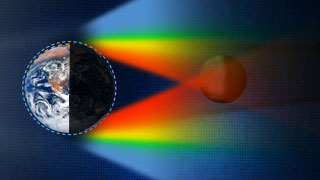
The Moon will appear red/orange during the total eclipse because the Earth’s atmosphere acts like a giant prism that refracts (bends) the white light of the Sun. Blue light scatters more readily than the other colors of sunlight. (This, BTW, is why the sky is blue!) The red light is refracted such that it dominates the light we see during a total lunar eclipse.
———————————————————————————-
Meteor Shower Peaks April 22
The annual Lyrid Meteor Shower peaks the evening of April 22. But the Last Quarter Moon will likely spoil the show. Still, you may see some shooting stars that evening — and during the evenings of April 16-25, when the shower is most active.
The best way to observe a meteor shower is to lie down on a lawn chair and look up: No telescope required!
Use the Moon to Find Your Star’s Constellation
Did you know you can use the Moon to help identify constellations (areas of the night sky) like Aries, Taurus and Sagittarius? Follow us on Twitter where we Tweet what constellation the Moon is in each night. (Note that during certain times of the month, the Moon will not appear during the night hours, and so we do not Tweet info about the Moon at those times of the month.)
Finding your star in the night sky
Stars are located within constellations, which are just areas of the night sky. Scorpius, Aries and Taurus are examples of constellations. Your Name A Star Live Star Certificate displays the name of your constellation. You can use our online World Constellation Guide to determine if you can see your constellation during the evening hours (between sunset and midnight). Of course, you’ll need a telescope to see your star. But you can see your constellation without the use of a telescope. You can also find your constellation by using our Virtual Planetarium™ astronomy software. A planisphere is another useful device.